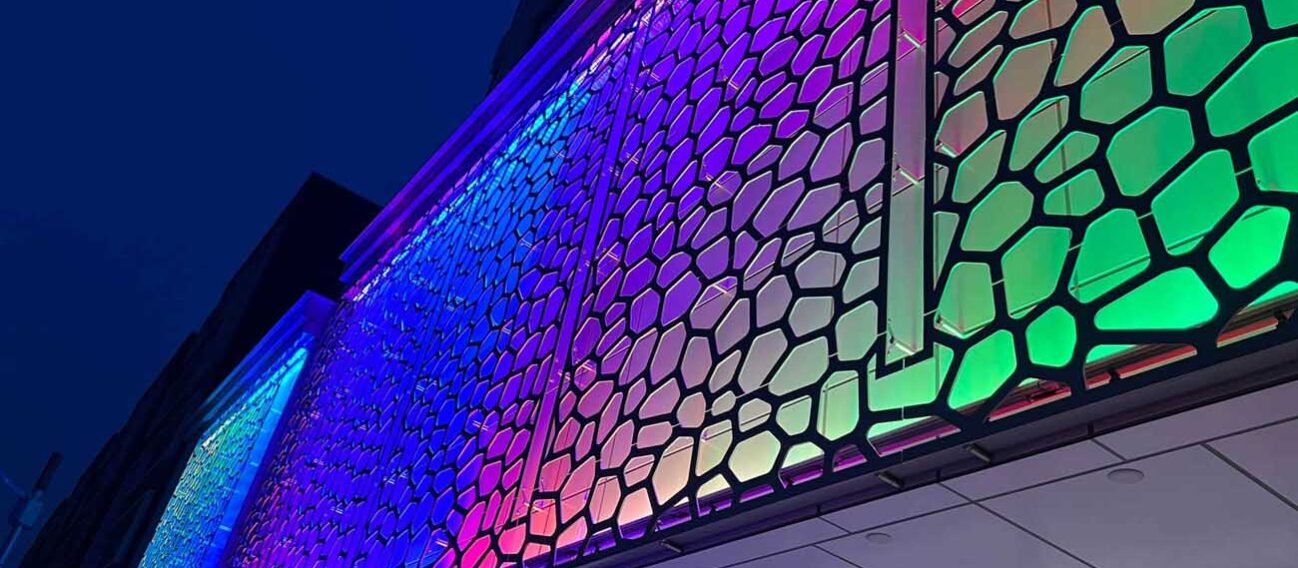Creating a landmark with dynamic hotel lighting design
Nestled in the Susquehanna River Valley in central Pennsylvania is the city of Sunbury. The sleepy town, first settled in the early 1700s, has never had more than 16,000 residents. Today the population has declined to under 10,000 as the waning rust belt has taken its toll. But Sunbury, PA, will always be notable in the history of hotel lighting. On the corner of 4th and Market Street stands the now-closed Edison Hotel, constructed in 1871 by a local entrepreneur named Edward T. Drumheller. The Edison was first known as the City Hotel. In the early 1880’s Thomas Edison also built the first three-wire incandescent electric lighting plant in the world in Sunbury. Soon after that, Edison and Drumheller collaborated to make the City Hotel the first electrically lighted hotel in the world. The official date that the hotel lit up was July 4, 1883 – a day that was already being celebrated in the American colonies with brightly colored light from fireworks. On the 150th anniversary celebration in 1922, the City Hotel was renamed the Edison Hotel.
We can easily imagine the City Hotel shining in the night as the warm glow of incandescent light escaped the windows and flooded onto the streets. Undoubtedly, the building became a memorable destination for travelers and an iconic landmark for the city of Sunbury.
Nearly 140 years later, hotel owners and managers understand that creating a memorable experience for guests is essential for success. And just as Thomas Edison’s lights made the City Hotel an unforgettable destination, hotel lighting design remains one of the most critical design elements for creating a lasting impression on guests.
Controlled color-changing LED light creates a selfie-moment for hotel guests
The Mission Bay neighborhood in San Francisco, CA, is almost 3,000 miles west of Sunbury, PA. The setting was actually an oceanic bay for centuries before the area became industrialized. Today the Mission Bay neighborhood has evolved into a wealthy community with luxury condominiums, hospitals, entertainment destinations, and eateries. Amidst this growth, a new hotel has used creative design and advanced RGBW LED light fixtures and controls to create a new memorable destination.
The Luma Hotel, located at 100 Channel Street, San Franciso, is described as fresh, inspiring, and innovative. It is also LEED Silver Certified. The facility lighting, interior, and exterior are designed to capture the community’s spirit and provide visitors with a welcoming experience. Jackie Hui, Director of Lighting Design for Stanford Hotels, explains that “proper lighting has a dramatic effect in rendering a space by enhancing that esthetics and the architecture to inspire people’s guest’s experience with a memorable, lasting impression.”
Hui understands that creating a memorable and welcoming experience for the guest will improve the chances of repeat visits and optimize the word-of-mouth marketing opportunities. The exterior lighting design of the Luma Hotel also creates a landmark for the passersby. According to Hui, “the hotel is being described as bringing new energy to the Mission Bay neighborhood.” The street-facing sides of the hotel incorporate color-changing light and design inspired by the local colorful salt ponds.
Custom light fixtures and solutions from a dedicated manufacturing partner
Hui worked with the Boca Lighting and Controls team to incorporate their LED accent lighting fixtures and controls to make his vision for the Luma Hotel a reality. He described the Boca team as dedicated and willing to help solve any challenge, including developing custom fixtures and fittings to meet the requirements of demanding projects like the Luma Hotel. Hui says, “I’ve worked with many other manufacturers, and they try to convince me that one of their standard products will be sufficient. The experience working with Boca is, what do you need every time? What do you see? How do you see this? What I appreciate most is the dedication and willingness of the Boca team to work with designers to understand the parameters and limitations.”
After sunset, the Luma Hotel in Mission Bay has become what Hui describes as a selfie-moment for pedestrians. He relishes the feedback from residents and local leaders who now recognize the hotel façade as a landmark in the community.
Selfie moments weren’t part of the culture in Sunbury, PA, during the 1800s, but pausing and marveling at the beautiful light emanating from the City Hotel was no doubt a regular occurrence. But now, in the trendy Mission Bay neighborhood of San Francisco, a new hotel and its stunning lighting design has become a selfie destination.







